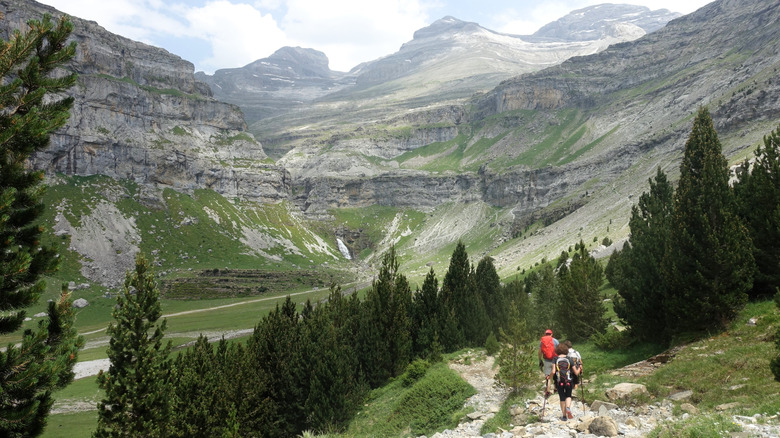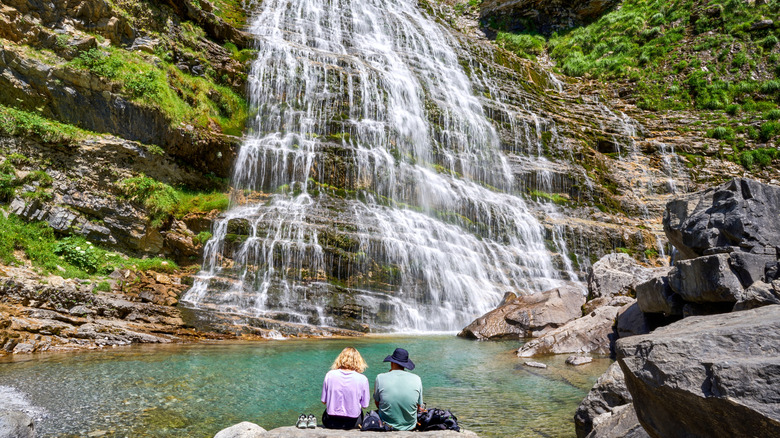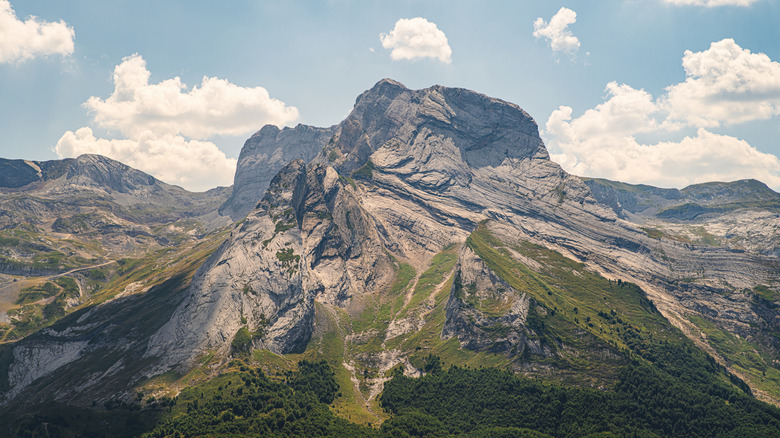Folks planning trips to Spain will likely think of two main possibilities: architecturally beautiful and cosmopolitan cities like Barcelona and Madrid or the country’s fabulous food and beaches at affordable prices. Few remember that the northern Spain-France border is all naturally defined by the rugged, high-elevation Pyrenees mountains. In north-central Spain sits a wonderland of biodiversity and natural beauty: Ordesa y Monte Perdido National Park. Laced with loads of hiking trails, stunning waterfalls, and views of one of Europe’s southernmost glaciers at Monte Perdido, this natural park is well worth the visit even if you’re not particularly outdoors-inclined. Plus, you can avoid all of the tourist congestion that Spain is trying hard to fight.
Covering 96 square miles, the Ordesa y Monte Perdido National Park has been part of UNESCO’s protected World Heritage Sites and Biosphere Reserves since 1977, and it isn’t hard to see why. The entire area contains a whopping 65 trails, ranging in difficulty from relatively flat treks to those with a 21,400-foot elevation gain. Centered on the peak of Monte Perdido, after which the park gets part of its name, travelers can soak in the full range of natural features, including valleys, ravines, canyons, lush forests, and open meadows, all full of wildlife. Of course, no visit to Ordesa y Monte Perdido National Park would be complete without stopping by one of the area’s waterfalls or seeing the unmelted snow of Monte Perdido’s high-elevation glacier.
Exploring Ordesa y Monte Perdido’s high-elevation trails
We mentioned that Ordesa y Monte Perdido National Park boasts 65 trails. This might not be as many as other national parks, but it’s enough to force you to plan a focused itinerary. And because the trail map for Ordesa y Monte Perdido National Park looks like spaghetti string madness, you’ll need to pinpoint the best hiking option.
For this, we turn to one of the most widely-acclaimed trails in the park: the Ordesa Valley — Circo de Soaso — Cola de Caballo route near the town of Torla-Ordesa. This rocky route winds from Ordesa Valley through a landscape of rich vegetation surrounded by the Pyrenees Mountains. Most critically, it takes you past what is arguably the prettiest waterfall in the entire park, the 82-foot-high, forested Cola de Caballo. Perfect for sitting and enjoying a mid-hike snack, the waterfall cascades down a cliff face and into a small pool. At 11 miles long and lasting over five hours, this route isn’t the easiest, so be prepared and pack enough supplies.
As far as the park’s glacier is concerned, you’ve got to take a totally different route. And we say “glacier,” singular, because there’s only one at an elevation of about 11,000 feet: the Monte Perdido glacier. Sitting on the north-facing side of the mountain, visiting this glacier requires trekking the steep, uphill Balcon de Pineta trail. The over 9-mile route ascends into the clouded peaks of the Pyrenees, where you can look out at the receding sheet of ice. But you’d better hurry, because the glacier is set to vanish by 2035.




